It’s the last weekend of SF MOMA’s Ruth Asawa: Retrospective exhibit, and this exhibit has been one of my favorites at SF MOMA in a long time.
I’ve posted before, I’ve been a big fan of Ruth Asawa’s work for a long time. I was first introduced to her work with in 2007 when it was at LA’s Japanese American National Museum as “The Sculpture of Ruth Asawa: Countours in the Air” (archived link). When photos of her art were put on stamps in 2020, I bought a few sheets. I love how recognizable her wire sculptures are, I’ve spotted her work in the permanent collections at the Oakland Museum of California, the Whitney museum in NYC, and there’s a large collection in the tower lobby of the DeYoung museum here in SF.
Her wire sculuptures are truly special (and my favorite to look at), but one thing that this exhibit does well is show how she made a lot more than wire sculptures too. Here non-wire sculpture art is all over the San Francisco: near the peace plaza in Japantown, along the Embarcadero, in Ghirardelli Square, near Union Square.
I took a bunch of photos, but I don’t think they capture the intricacy or scale of the work.
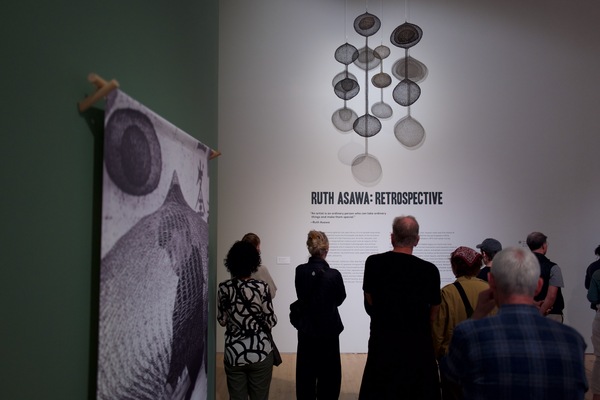
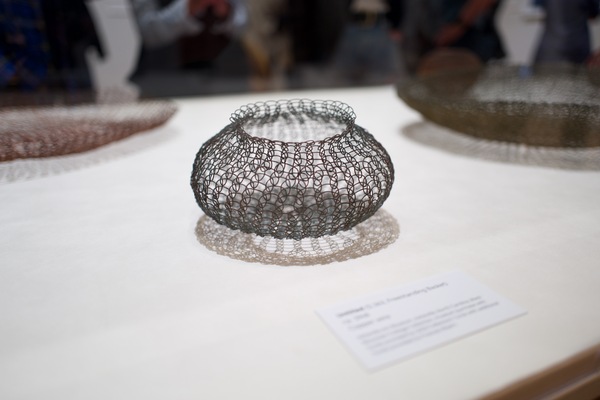
Her earliest wire sculptures were bowls

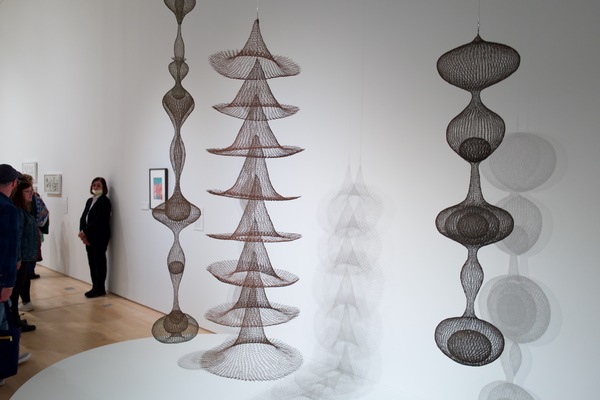
I made great use out of SF MOMA membership with this exhibit, I think I visited at least five times. My first time visiting, I tried to take in as much as possible and got overwhelmed. I loved that on subsequent visits, I could find things I missed in previous visits.
The first big room of wire sculptures was great because I started looking closer to piece together how they were made, and understand the variety of techniques used. It was cool to see how for some multi-layered pieces, the inner layers were constructed separately and then the outer layers were built around, or through. Some of them were single layers that folded inside and outside to make the multiple layers.
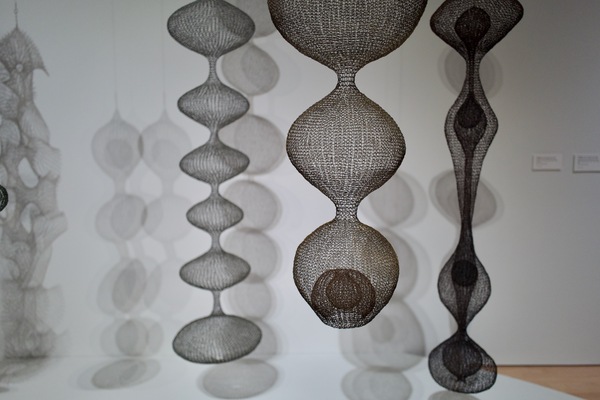
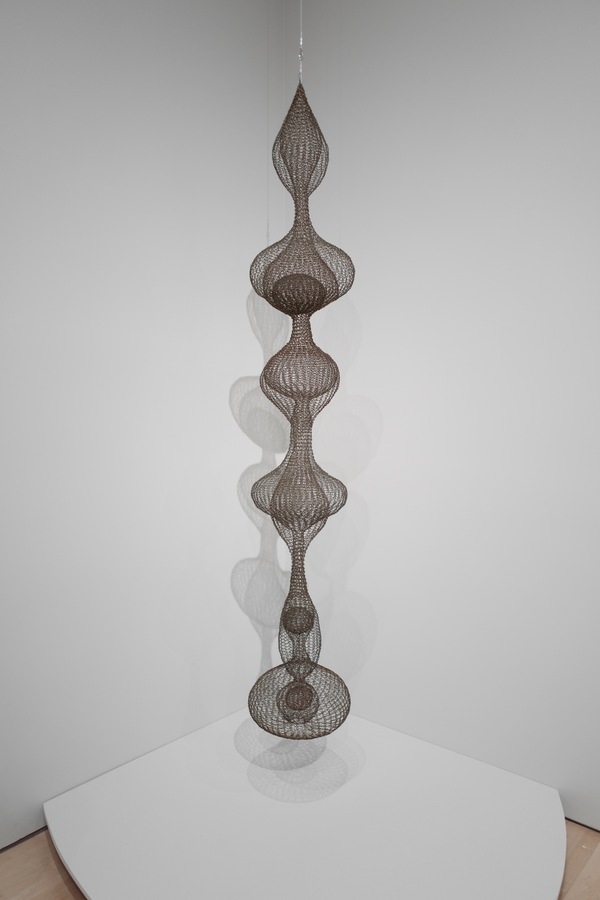
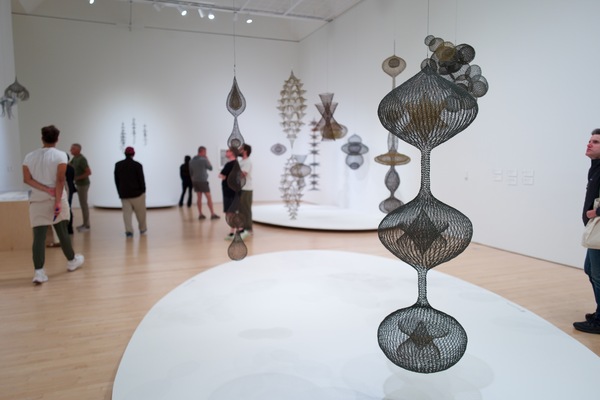
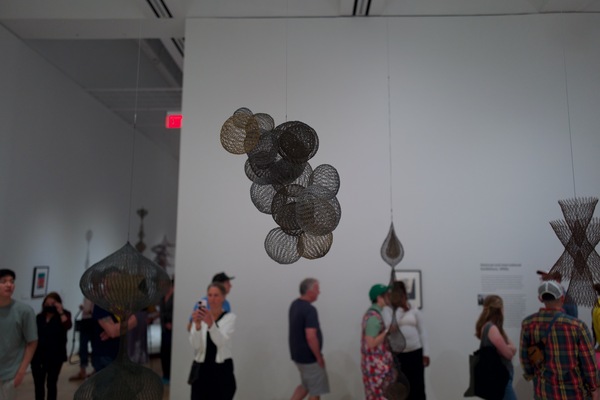
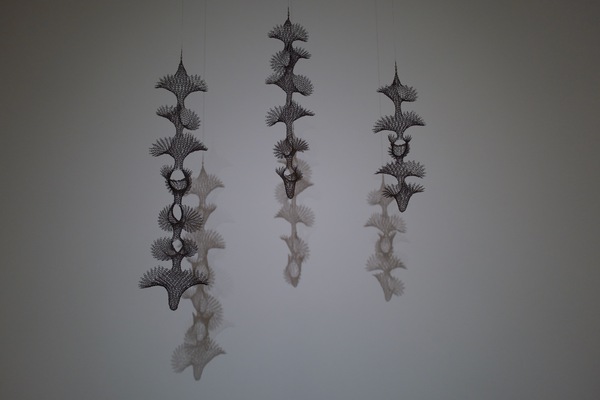

Face mold sculptures
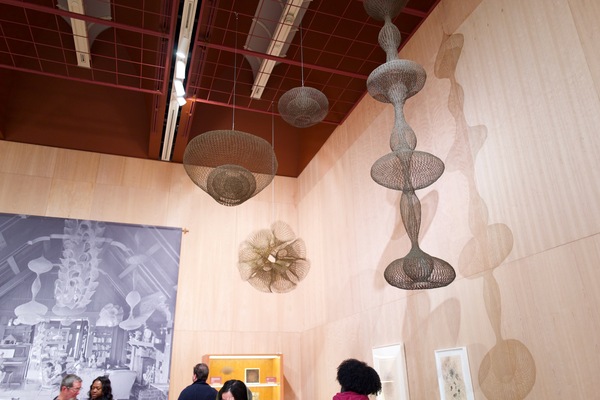
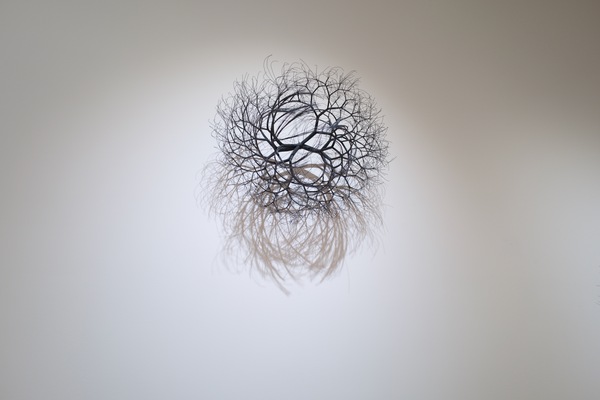
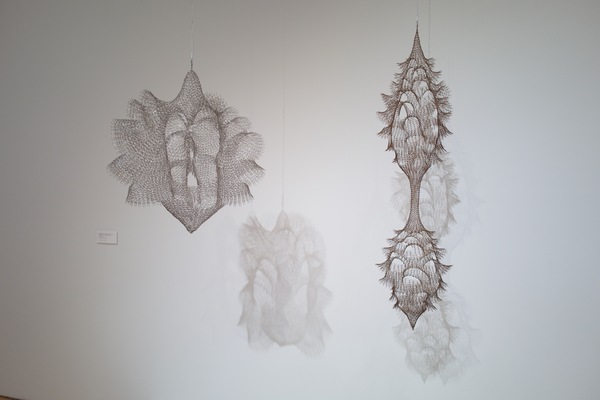
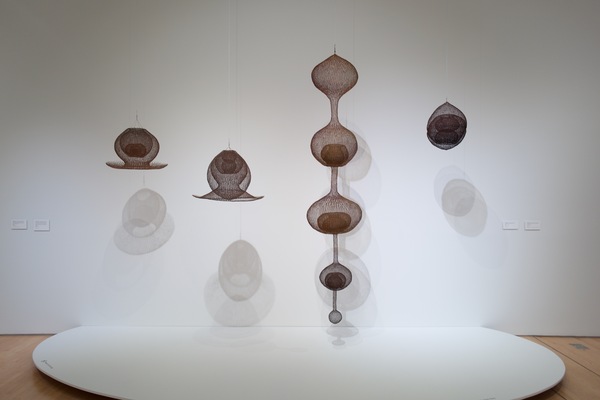
Prior to this exhibit, I was familiar with the cliff notes biographical details of Ruth Asawa: she was Japanese-American, born in California. She and her family were sent to internment camps during World War II. She went to art school at Black Mountain College in North Carolina, and eventually ended up living in San Francisco until she passed away in 2013.
What I didn’t know until I read the placards in this exhibit was that she had lupus, and the arthritis-like joint pain from that made her large-scale wire sculptures a challenge to make. So she pivoted! She made much smaller versions, and when that became too challenging, started doing watercolor painting.
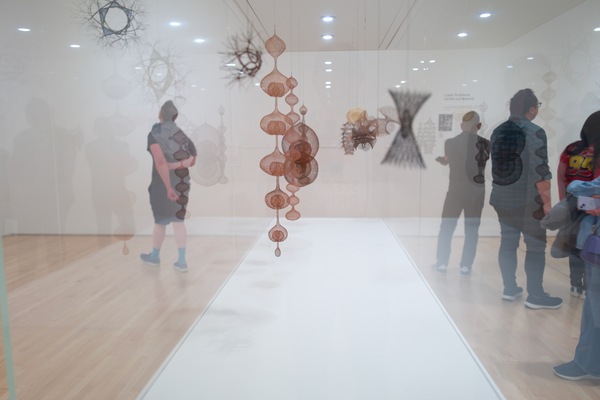
Smaller-scale wire sculptures in a glass case
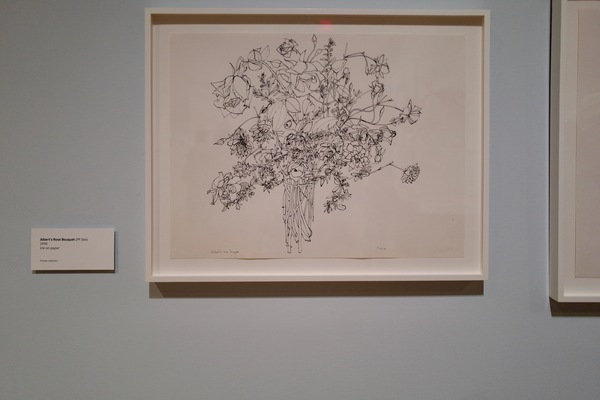
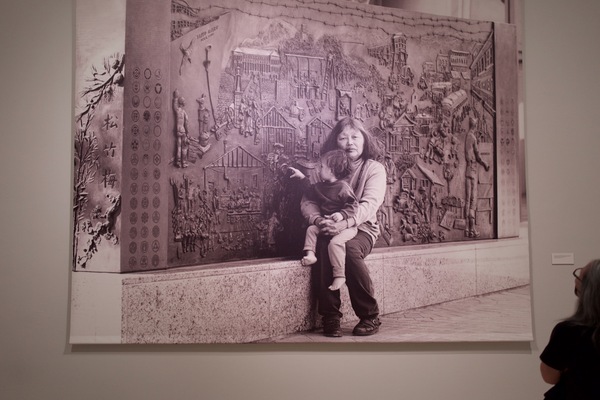
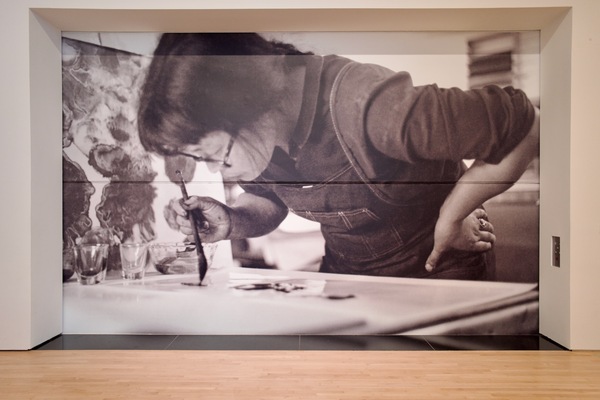
Freight elevator with a photo of Ruth Asawa
I really enjoyed this exhibit! It will show at NYC’s MoMA next. I’m excited for other folks to be able to enjoy it!